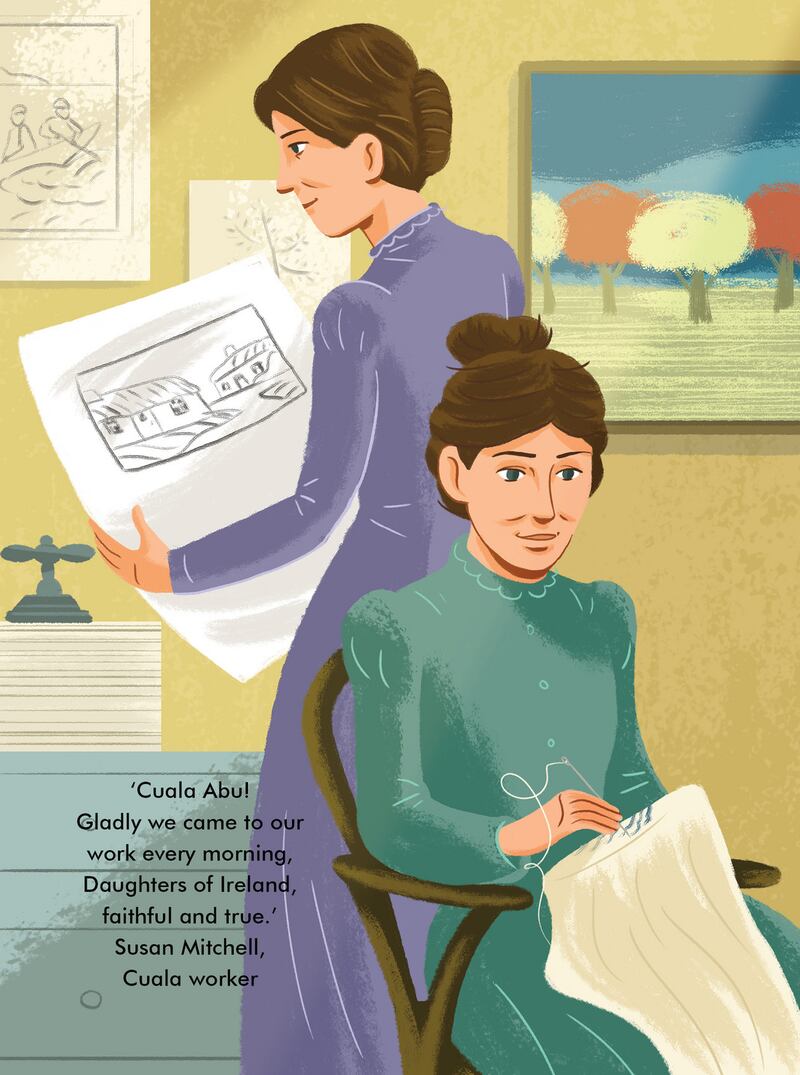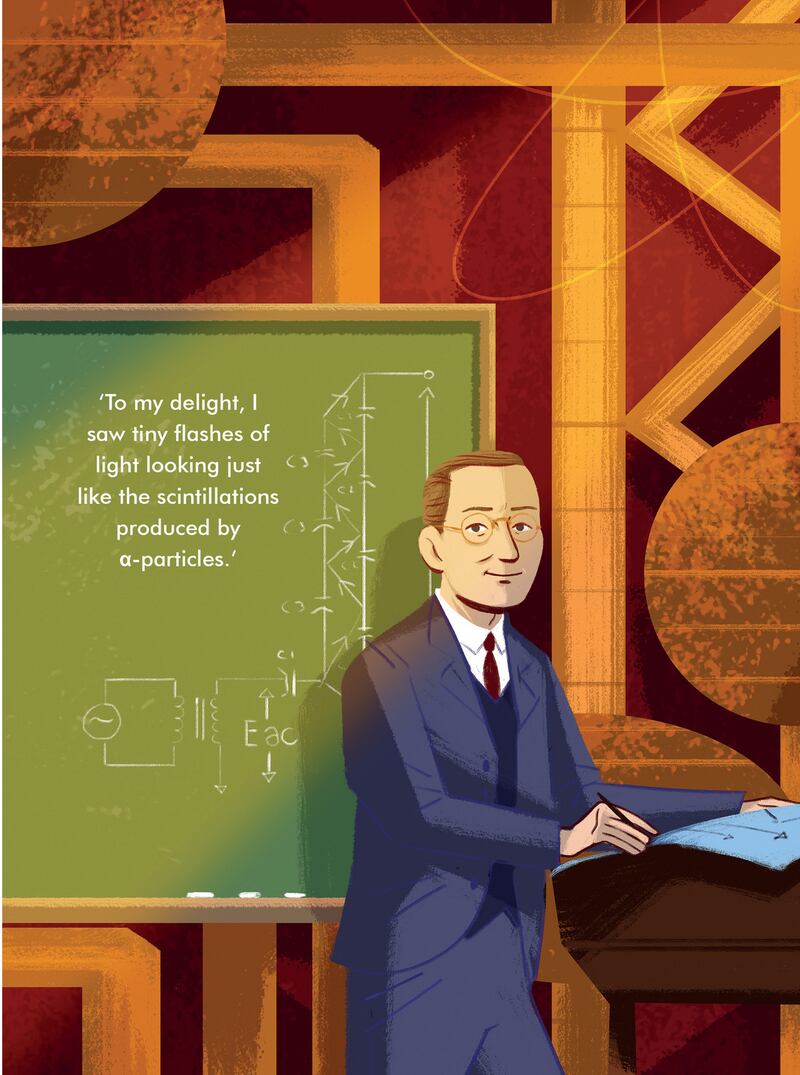Children love stories. And this is why, if introduced to them properly they can also learn to love and be fascinated by history. After all, the word story is embedded in the word history.
I’ve been delighted to see a surge of “herstory” books in the past few years, books focusing on giving women from the past a voice. From now on I think all history books published should have a balance of all voices, female and male – “ourstory” books.

I’m often surprised by how few historic figures children recognise. I visit schools most weeks – last week I was in Ringsend Boys’ National School – and on arriving into their classroom I like to ask the children two questions. Who was Douglas Hyde? And who is Mary Robinson? Usually only a few know the answers. In Ringsend, fourth class were above average, with several knowing both answers. One of the boys in the class was a direct descendant of Tom Clarke so they were very clued in about 1916 history!
Lack of knowledge about Douglas Hyde I can live with but if anything gets me riled up, it’s children not knowing who Mary Robinson is! It’s what set me off on the history book journey in the first place and now that I’ve got a taste for it I’m not stopping. But why does it matter? Why do I think that all children need to know about Mary Robinson?
In 1990 when Mary Robinson was elected President of Ireland it was the first time I was old enough to vote in a presidential election. As a young woman I was heartened and emboldened to see a woman win the election. Being first is never easy but its importance cannot be underestimated. She made a lasting impression on me and my generation of women.
In Dare to Dream I tell the stories of many firsts – Ronnie Delany’s first gold medal for Ireland (for the 1,500 metres in 1956); Lolly Yeats, one of the first Irish woman to set up and run a publishing house, Cuala Press in 1908 (part of Cuala Industries, co-run with her sister, Lily); and more recently Dr Sindy Joyce, the first Irish Traveller or Mincéir to graduate with a PhD.


When I ask the primary school children about firsts in their own families they share them with pride. Often the teachers share their stories too.
History is a record of who we are. But many people have been left out of the traditional history books. We have only recently started sharing the stories of Irish people who fought or served during the first World War, for example, my own ancestors included.
There are lots more stories to be told such as women’s history, Traveller history and Irish-Jewish history to take just three examples that I am particularly interested in.
In Dare to Dream I tried to include Irish women whose stories are not as well known as they should be like Gretta Cousins. Gretta helped set up the Irish Women’s Franchise League with Hanna and Francis Sheehy-Skeffington, along with her husband, James. She and James then moved to India for work in 1915, but only after Gretta had been arrested and imprisoned twice – in Dublin and in London – for her suffragette campaigning.
In India she started campaigning for Indian women’s rights and also Indian independence from Britain. At the age of 54 she spent a year in prison for supporting Gandhi. While there, she taught the other prisoners civics and singing and planted and looked after a prison garden. After her release she added prison reform to her list of things to fight for.
She was the first woman judge in India and set up the All-India Women’s Conference which still runs to this day. What a powerhouse!
I also included the remarkable citizen scientists, Maude Delap and Cynthia Longfield, or Lady Jellyfish and Madam Dragonfly. Both born in an age when women barely got an education let along studied science (before 1904 women were not allowed study at Irish colleges), they made important scientific discoveries which were recognized world-wide.
Maude was the first person in the world to raise jellyfish in captivity and studied and explained the complex life cycle of the jellyfish in scientific papers that are still used to this day. Cynthia discovered many new species of dragonfly and was a renowned insect expert, travelling all over the world (often alone) to study them.
As a country we are no slouch when it comes to science. Ernest Walton (also in the book) won a Nobel prize in 1951 for his work on splitting the atom and Margaret Murnane, distinguished professor of physics at the University of Colorado (included in the Inventors and Discoverers spread) is building some of the fastest lasers in the world.
After researching the book I also came across musician Margaret Barry, who was a famous folk singer from the Irish Traveller community.
I asked Dr Joyce about Margaret and she told me: “At a very young age, she learned how to play the fiddle and the zither banjo and at 16 years old, she moved away from home, performing on the streets across the country. While she was performing in Dundalk, an American folk music collector called Alan Lomax heard her sing and that night she made her first recordings. Eventually, she moved to England and got involved in the thriving Irish music scene. In 1965, she shared the stage with Joan Baez and Bob Dylan at the Newport festival. She has inspired and influenced many of Ireland’s known traditional singers including Luke Kelly.”
I also asked Dr Joyce why in her opinion Traveller history was not well known. She said: “Not only has Mincéirí history been neglected from Irish history books but we as a people have also been neglected from Irish history itself. Throughout the centuries, our history is largely unrecorded, partly due to our oral tradition and state historical neglect.”
She gave me lots more fascinating information about Mincéirí history and I am definitely interested in finding out more. If like me you are interested she said the “Irish Folklore Commission has a vast archive of materials on Mincéir history including audio-recorded interviews with Mincéirí. It would be a good idea for schools to organise a day trip to the Folklore Commission.” Excellent idea for any teachers reading.
I also recently discovered some fascinating Irish people from the Jewish community, such as Bethel Solomons (1885-1965) who was Master of the Rotunda Hospital. He also played rugby for Ireland and supported the 1916 Rising. His sister Estella (1882-1968) was equally fascinating. She was a leading artist, an active member of Cumann na mBan and an accomplished printer.
History is a record of who we are. But many people have been left out of the traditional history books. We need to revisit the past and tell the stories that have not yet been told. I believe we will be a much richer country for it.
If I write another history book for children I’d like to include people like Margaret Barry and the Solomons family. I think children would love to hear their stories. Watch this space!
Sarah Webb’s latest book is Dare to Dream: Irish People Who Took on the World (and Won!), illustrated by Graham Corcoran and published by The O’Brien Press. It was shortlisted for an Irish Book Award in 2019.

















